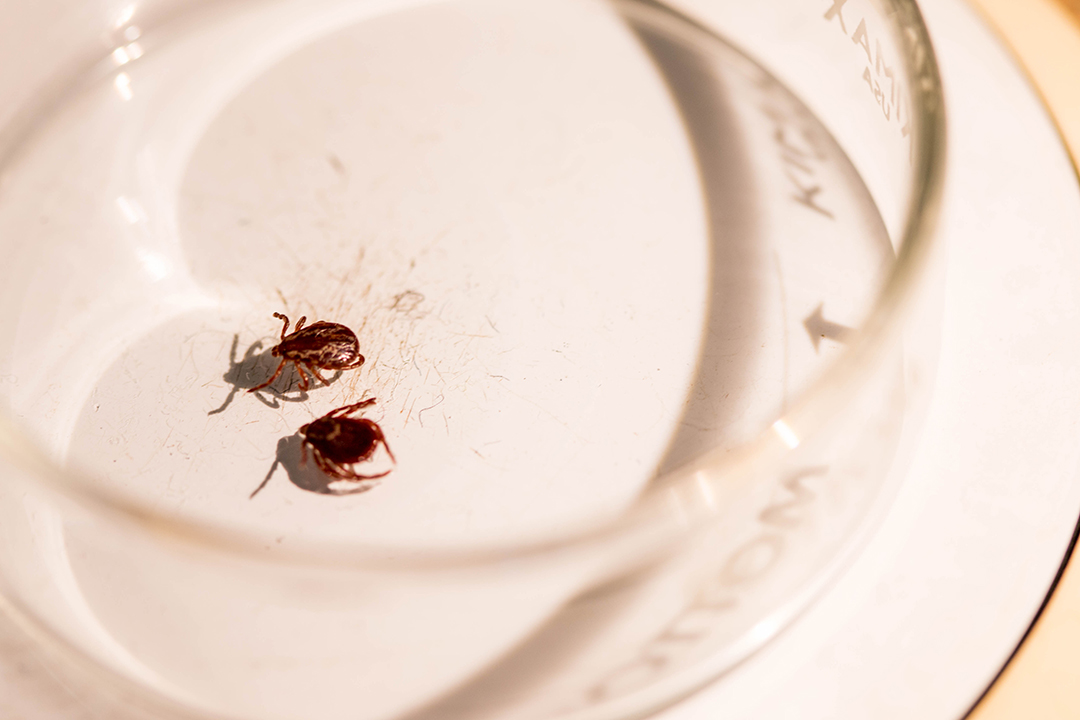
Online tick identification service gains SHRF support
A Western College of Veterinary Medicine (WCVM) research team has received funding from the Saskatchewan Health Research Foundation (SHRF) for tick identification and surveillance in the province.
By Jessica ColbyIn June, SHRF announced funding for 11 short-term projects related to human health research knowledge mobilization for 2021-22. The WCVM research team, led by Drs. Maarten Voordouw and Emily Jenkins, received a $7,500 SHRF Research Connections grant to support their work with eTick, an online tick identification service.
eTick is an app and website developed by Dr. Jade Savage, a biology professor, at Bishop’s University in Sherbrooke, Que. In 2020, Saskatchewan joined the growing number of Canadian provinces that use eTick to monitor tick species and to inform provincial residents of potential health risks.
“eTick provides information to the public about ticks and tick-borne diseases and it provides information on tick encounters,” says Voordouw, an assistant professor in the WCVM’s Department of Veterinary Microbiology whose research work focuses on tick-borne diseases.
The most common tick in Saskatchewan is the American dog tick (Dermacentor variabilis) which does not transmit Lyme disease. In contrast, the blacklegged tick (Ixodes scapularis) does transmit Lyme disease but is not common in Saskatchewan.
Voordouw describes eTick as a free public health service that can help ease the anxieties of those who are concerned about tick bites.
“It’s actually the Saskatchewan Ministry of Health that approached us and said, ‘We’re interested in shifting to this system,’” says Voordouw.
Before Saskatchewan introduced eTick to the province, tick identification operated on a mail-in basis. When residents found ticks, they mailed them to the University of Saskatchewan for identification — a process that had a turnaround time of about seven to 10 days.
Now, the process is much simpler. If residents find ticks on themselves, their children or their pets, they can submit photos of the ticks to eTick and USask researchers can identify the species. The 24-hour turnaround time can further help to ease worries, especially if someone is concerned about contracting Lyme disease.
“It’s important to know the tick species that bit you because it lets you know what the risk of tick-borne disease is,” says Voordouw.
This summer the team also includes department assistant Brent Wagner and Georgia Hurry, a recent biology graduate, to assist in identifying ticks that are sent in through eTick.
While most residents submit digital images to the university’s tick identification service, Voordouw says researchers still ask for actual ticks to be mailed in so they can regularly validate the team’s identification protocols.
If researchers identify a blacklegged tick or other unusual species, those ticks are also sent to the National Microbiology Laboratory (NML) in Winnipeg, Man., for testing of tick-borne pathogens. However, the NML service will no longer be available after September 2021.
The SHRF funding will also be used to support the development of a report summarizing the team’s experience with eTick over the past two years. Written by Hurry, the report will describe the app’s benefits for passive tick surveillance and its role as a public health information tool for Saskatchewan residents.
“eTick is all about communicating scientific information to the residents of Saskatchewan,” says Voordouw.
Jessica Colby of Montmartre, Sask., is a fourth-year student in the University of Regina’s School of Journalism. She is working as a research communications intern at the Western College of Veterinary Medicine (WCVM) for summer 2021.
